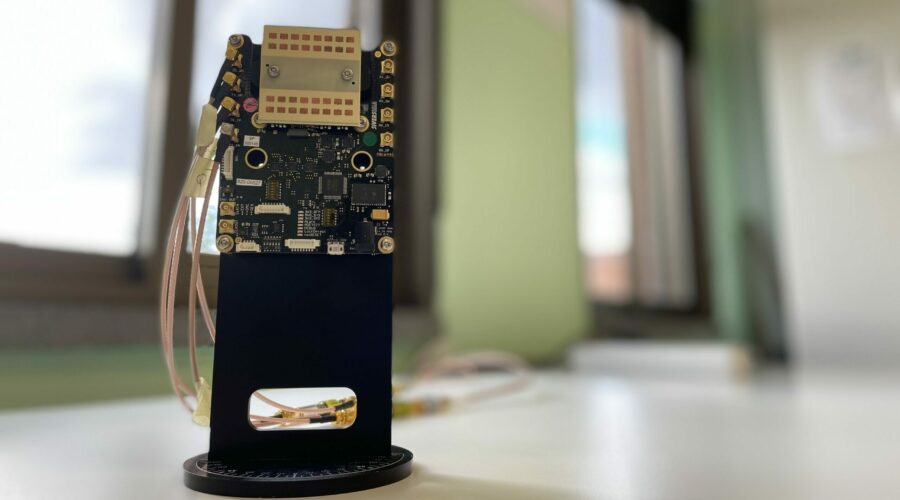IMDEA Networks

A patent granted to IMDEA Networks recognizes a breakthrough in the study of millimeter wave bands
The Spanish Patent and Trademark Office recognizes innovations in research to maximize the capabilities of signals for use in society
21 September 2021

IMDEA Networks Institute has just been granted a new patent (in this case in Spain, in addition to the one already granted in the United States), a new recognition by the Spanish Patent and Trademark Office of its technology transfer process to the market. Method for determining geometric information of mmWave networks devices has been developed by the team formed by researchers and former IMDEA Networks researchers as Guillermo Bielsa, Joan Palacios, Paolo Casari, Joerg Widmer, and Adrian Loch.
Paolo Casari (currently Assistant Professor at the University of Trento) explains, as the spokesperson of the team, the relevance of this development, aligned with the goals of IMDEA Networks to encourage innovation, the guarantee to the continuous improvement in the quality of research and, ultimately, of human life: “Future 5G networks will incorporate communications at very high frequencies, using the so-called millimeter wave spectrum. A very new technology that will bring unprecedented connection speeds in support of everyday activities (e.g., watching videos, browsing the Web) as well as of real-time applications (virtual reality, autonomous driving, etc.). We invented a method to extract valuable information from millimeter-wave signals and to make sense of this information to estimate the location of a client”.
One of the distinctive features of this invention is that there is no need to incorporate additional sensors on the device. “We only use, instead, signals that would be exchanged anyway for communication purposes. Moreover, our system works inside buildings, where common localization equipment (for example GPS receivers) would not work”. Another functionality: the invention makes it easier to locate devices attached to a millimeter-wave network, which makes it possible to offer better services.
As Casari points out: “From the perspective of telecommunications this is a very important achievement. For example, our invention enables a group of devices called access points (very similar to the devices we connect to with our smartphones and laptops when we are home, at work, or in a bar) to coordinate and deliver faster links to every connected client. It also helps avoid and prevent those obstacles placed in the middle between a network device and an access point completely prevent communications.
“The implementation (Casari concludes) will be able to help whenever we need a fast and accurate location system that works out-of-the-box using future millimeter-wave network signals. In turn, a fast and accurate location system makes it possible to deliver personalized location-based services to every user… At work, it can help you find services around you (for example, the closest printers and electronic boards for meetings)”. Countless applications that only depend on the context in which they develop: an outdoor area with many restaurants, a complex indoor structure, etc.



Recent Comments